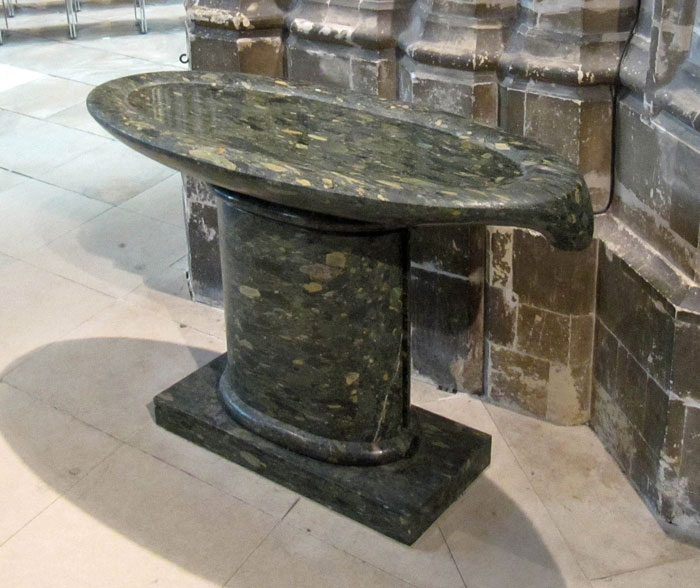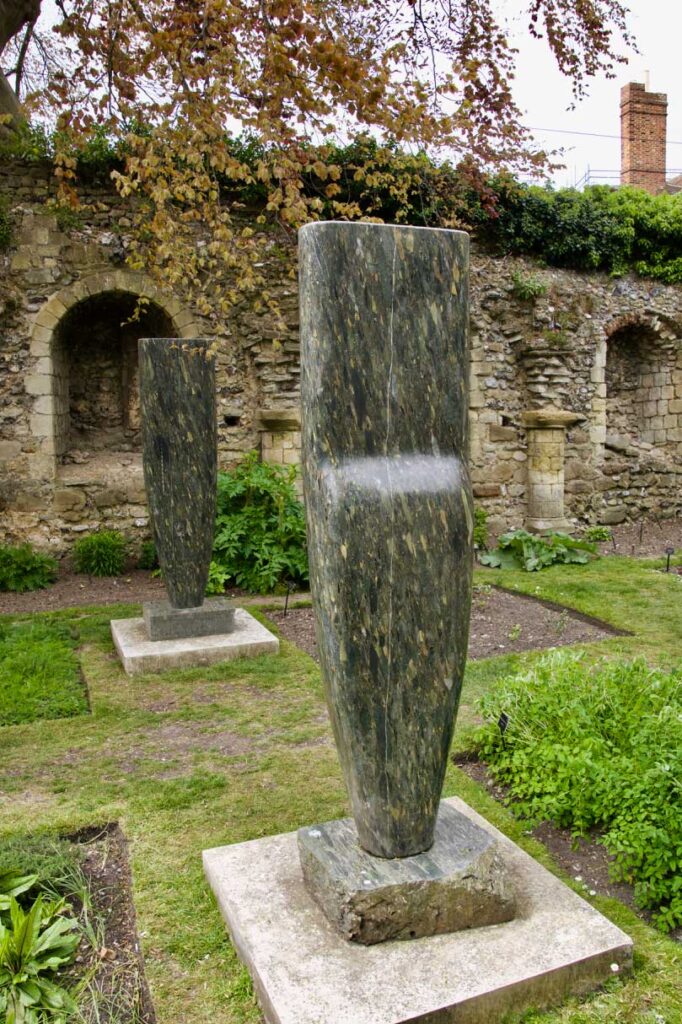Basics
Geology: a partially metamorphosed, polymictite and matrix-supported conglomerate
Age: Ediacaran
Provenance: Bir Umm Fawakhir, Eastern Desert of Egypt
Where to see examples
stoup in the nave
Until recently cathedral visitors could see the Gemini Twins sculpture (image 2 below) near the water tower; however these were removed on 27 June 2022, and it seems unlikely they will return soon, if at all.


Description
This stone trades under various names: Fawakir Breccia, Fawaquir Breccia and Fawakhir Breccia, each a phonetic representation of the provenance in Egypt. The stone has also been referred to as Hammamat Stone and Hammamat Breccia.
While the stone frequently trades as a breccia, it is more accurately described as a matrix- supported conglomerate because it contains numerous large and small rounded clasts. A closer inspection of the clasts will show that they are all elongated, with a preferred orientation. The conglomerate has therefore been slightly metamorphosed and could be described as a metasediment. The conglomerate was the basal unit of a thick sequence of sediments deposited circa 580-593 Ma in a fluviatile to shallow marine environment. The clasts include various granites, chert, jasper, vein quartz, serpentine, metasediments and various fine-grained igneous rocks. The predominant green-colour in the matrix may indicate the presence of chlorite.
The name Fawakhir comes from the Egyptian town of Bir Umm Fawakhir in the Eastern Desert located 5 kilometres north-east of Wadi Hammamat. The quarries in this region were first exploited by the Romans when the stone was referred to as lapis hexecontalithos (stone of sixty stones) and lapis hecatontalithos (stone of one hundred stones).The Fawakhir Breccia holy water stoup was sculpted by Stephen Cox who was also responsible for the recently (2005) installed altar of Verde dAosta Stone in St Anselms Chapel at the cathedral.
Note: This account is a summary of an article by Geoff Downer that first appeared in Soft Rock (issue 2/2011), the newsletter of the SE Branch of the Open University Geological Society
